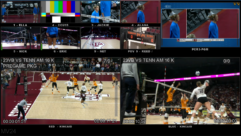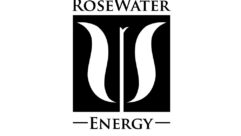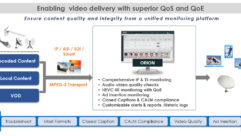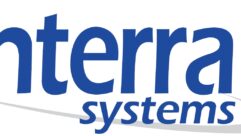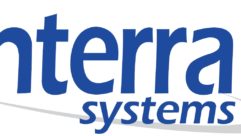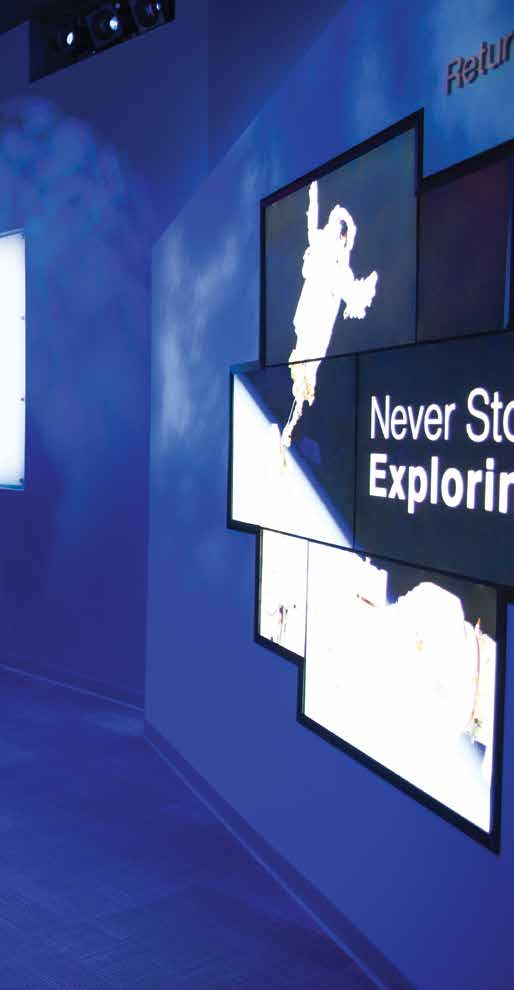

In the quest for space exploration there have been many triumphs and some tragedies along the way. NASA wanted the visitors to Kennedy Space Center to come away knowing more about those who gave their lives taking us into space. They gave Rockledge Design Group (RDG) the job of designing the Forever Remembered Memorial, which is the first permanent installation to commemorate the crews of Shuttle Challenger and Shuttle Columbia that were lost. Brian Karr is going to tell us how he combined his engineering and content background to wear two hats on the project.
SVC: There is a lot of emotion involved when remembering those who have given their lives in the space exploration effort. When these accidents have happened the press jumps right on it and they pretty much all say the same thing and then it subsides pretty quickly. But if you really want to get to know the flight crews and their individual stories, this is the place to do it.
Brian Karr: Absolutely. One of the things that was fascinating for me is a lot of people are familiar with some of the astronauts, and certainly the teacher in space, but going through this process and seeing some of the items that the families donated to go into the individual cases for each astronaut, you realize just how incredible these people were. Not only were they astronauts, but also amazing people.
You played two roles in the memorial’s development. Firstly, how were those video walls designed and set up, on the technical side of it?
I’m an electrical engineer and first we developed the video systems—everything from the video walls, the mechanical engineering, how they’re going to be supported, the players, what resolution we were going to use, what bandwidth in the players. And then as it turned out I’ve done some creative work, so on this project I wore a second hat which was to lead the creative development along with a small team.
Where do you get the source material that’s played and how do you get that content from the source to the monitors?
Before taking on this project, for about six years I worked at Kennedy Space Center where I was the lead engineer of a lab called the Advanced Imaging Lab. We developed digital imaging technology from capture—putting cameras out on the pad—through processing and all the way to display. We worked through the entire digital workflow, developing what would be the next generation digital imaging systems to be used on rocket launches. What a lot of people may not be familiar with is that most of the engineering imagery of shuttle launches was shot with film through the entire shuttle program, so 16 and 35 mm film (much of it 10 perf). We had been looking at digital cameras from all these different vendors and evaluating them. So as it turns out we had a great deal of 4K and highspeed digital imagery that we could utilize for this project. So tell me about the display first. We used a Planar video wall, a combination of 46-inch and 22-inch monitors in a mosaic pattern, and we used a small form-factor PC with a latest generation video card that was capable of playing out 4K content. So it is actually a single 4K file that is played out on a small form-factor PC via DisplayPort. The way the Planar video wall works is that DisplayPort signal actually daisy chains through the array. Each screen has a controller that knows “I’m these pixels within the 4K window.” It was a really neat way of doing it because I could develop the 4K content as this single file and play it out as a single file and the video wall takes care of all the processing.
How do you light that to avoid washing out the monitor images and glare while watching the monitor wall from different angles?
One of the things I learned here is that it’s really important to talk to whoever is doing the show lighting. In some instances, the walls around the mosaic are show lit so we had to come back and put in a bunch of masking on those lights to prevent reflecting off the screens. One of the reasons we went with the 4K imagery was you can literally walk right up to these screens. So all the original content had to be high resolution. We wanted it to look great if you were standing a foot in front of the wall. Tell me a little more about the video processor you used to play back the content of the exhibit? We used a small form-factor PC that Intel makes. It’s called the Intel NUC. The current version of that comes with the internal video processor that will play out 4K. We did some testing playing with different bit rates to see how high we could go and have it still play, but it worked really well and it’s been playing pretty much flawlessly since we installed it last June.

Where did you locate the playback machine? Is that in an AV rack somewhere or did you have it right there at the monitors?
It’s actually mounted to the back of the video wall. One of the things with Display- Port, especially when you have 4K resolution and a higher video bit rate, is you need to keep that cable length fairly short. So the run from the video player to the first monitor is a twofoot long cable. We just didn’t want to take any chances having any sort of loss because of cable length. So it’s mounted right to the back of the video wall.
I’m sure that comes in very handy when you have to do testing or make any tweaks in the content to see how it looks in that exact environment. It would certainly eliminate a lot of running back and forth.
Yeah. It’s a very simple setup. There’s just a player that plays out directly to the video wall and that’s about it. I think they were a little bit surprised because they were used to having servers and server racks. In our case, we’re just playing this one file over and over again so we didn’t need anything elaborate. It was a matter of finding the right hardware to do just that job and not over-engineering it.
You’ve had an extensive background working with NASA. How did that experience help you in carrying out this project?
I was familiar with the source material because most of it I had shot with my team so we knew what existed. But also working through a lot of post-production and the handling of data, one of the things that we’ve learned over the years in the Advanced Imaging Lab and using so many different manufacturers’ cameras is that there are just so many different formats. So we had a great deal of knowledge in terms of working with different formats. That helped us a lot not only with our video, but video we got directly from NASA and also with still images. A lot of the images that were provided to us that we wanted to use were not of high enough resolution, so in many cases we had to go out and search and try to find higher resolution images or in some cases we even had to do a little bit of Photoshop type work on images if they weren’t of high enough quality.
What did NASA want to say with all this content? I know there were some specific points that they wanted to make.
That’s a great question because what they didn’t want us to do was a rehash of the accidents and the classic footage you see of the accidents either during the liftoff or during the reentry. Our goal was to be respectful, to be inspirational about these extraordinary people who gave their lives in the quest for exploring space. So I will tell you in the beginning we were given a lot of footage, we were given a lot of still images, and we really did struggle quite a bit. The idea was there are the three steps of recovery after the accident. So it was the emotional recovery of what happened and then there was the physical recovery of having to go out and collect all of the debris and pieces and then of course return to flight. Now we’ve got to get back to launching again. So when we were going through the material, there were two gentlemen from NASA, Mike Ciannilli and Luis Berrios, and there was a gentleman from the Visitor Complex operator Delaware North, Daniel Gruenbaum, and the four of us were struggling because we had all this material, but we were just so afraid of making a slideshow.

So what was the turning point for the content creation?
It was a day that Luis Berrios and I opened up a box of material that Mike had given us. It was all these children’s cards that had been sent in to NASA after each of the accidents. I read through maybe five or 10 cards and I was just completely blown away by what these kids had written- -incredibly powerful and strong and emotional messages. I almost feel like they did a better job with it than probably a lot of the adults did because they were still very hopeful. The kids really understood and could express why astronauts do what they do. And so we kept reading these cards and it just sort of hit us—this is the story right here. This is how we’re going to tell it, through these children’s cards. So we started laying them out on the floor and basically let the children’s messages narrate the story.
There must have been just tons of source material to go through. I know you didn’t want to miss anything. You shot a lot of this yourself but there was video and images shot by others years ago with no notion at that time of how this would be used. What was the process that you used to go through all of the source material?
There were hundreds if not thousands of still images available out there. Especially when you got into the recovery and the debris. Challenger and Columbia, both had all these pictures of debris. I was familiar with using DaVinci Resolve as a color-grading tool and I had just started playing a little bit with the editing features in it. And so we organized by using the bin features in Resolve. We were able to assemble different frames and themes on the timeline and almost instantly jump over to the grading page and get a first pass grade on it and say ‘hey, is this kind of the emotion? Is this kind of what we want to do with this particular scene?’ The new editing features in Resolve let us work back and forth between all this material, assembling it and putting together a look all in one package. It saved us from having to do a round trip to an NLE and that saved a lot of time—to be able to work completely from within Resolve. We were definitely on a strict schedule and budget. And the other thing is having that flexibility to work with that much material. We had these a-ha moments where ‘wow, that really looks great with that, and that’s really kind of the message we were trying to get across.’
Once you got all of that together then you had to make the final assembly. How long is the video wall presentation? Is it a continuous loop?
It is a continuous loop. The first two segments, the emotional and physical videos, are about six minutes. And then the return to flight is a little bit shorter. I think it’s about three and a half. And they just loop continuously. It’s not meant to be in the style of quick cuts and quick editing and a lot of the type of stuff that you see today. This is slower-paced and it’s really supposed to take you through a range of feelings. And some of the best experience and preparation for this job was your work with NASA’s Advanced Imaging Lab. What kind of a place is that? I hate to say this, but it’s like being a kid in a candy store. I mean really, we had a lot of the latest and greatest equipment. We had our own tracker, which was basically a trailer-based tracking system that we could mount cameras on and track the launches. So before a launch, whatever systems we had, either that we owned or had on loan from manufacturers, we would put together and put on the tracker and then bring it out. We were about three miles away from the shuttle pad where we would set that up. And then of course we also had access to the shuttle pad itself. So we would set up different camera systems on the pad or on the structure next to the shuttle and we were able to get some truly amazing footage. As an example, in one case we had two Phantom high-speed cameras that we set up on a 3D configuration just about even with the top of the external tank. So we had this amazing 550-frame-per-second high-speed shot of the shuttle flying through in 3D. It was really fun. We had fiber optic communication from the camera slides back to our lab and we had a control center in our lab so we could actually control all of the cameras. And if the lens systems were controllable, we could control all that from the lab. So we would come in about six hours before a launch. We would have everything set up and we would operate all the imaging systems from our lab as a mini control room. It was really, really fun.
When you got this all together and assembled there was a color theme that was part of the message. How does the color theme help tell the story and reflect the emotion at the various stages of the recovery?
Yeah, and that’s where Luis Berrios, the NASA lead designer, came in. He had a specific color theme for each of the different stages. So for the emotional, it was much more of a purple and pinkish—not really sad, but a memorial type of feeling. And then we move into the physical recovery, which for Challenger, you’re doing a lot of the recovery on the ocean so you had an ocean blue kind of moving a little bit away from the softer hues of the purples and the pinks. And then as we got into return to flight, we shifted more into that bright sky blue because now we’re returning to flight, we’re launching again.
You had to have some test subjects for this before showing it to the public.Who were the first people to see the video wall content play on the initial demonstration?
Well, so that’s an interesting story because this memorial, out of respect for the astronauts’ families, it was actually kept very secretive. They didn’t want word to leak out before the families had an opportunity to see it. So up until when the families were able to come and view it, I would say less than probably about 10 people had seen the actual videos. They were mainly internal NASA folks and people working very closely with us. We did have very good feedback from them, but I will say it was a little bit nerve-racking because not a lot of people had really seen this before it opened to families and the public. So for me, I was very nervous. It was an honor to be part of this, but you also want to do a good job and you certainly want the families to be happy and you want to portray these astronauts as the incredible people that they were. The feedback that we got from the families was just really, really positive. I think they were very happy with how it came out and how it was very respectful of the accidents and respectful of the people. At the end of the day I think everybody was very proud of it.
Are there other elements to the exhibit?
There’s the part with the video wall and there’s also a section where each of the astronauts has a case where family members have donated personal items. So you walk through that and you get to really meet each of the astronauts. There’s a third section that has two very large openings that are protected, of course, by glass. This is the first time this has ever been shown to the public—they’re actually two pieces from each of the recovered orbiters. In the case of Challenger, the sidewall, the piece that was recovered that has the American flag on it, which is very well intact is on display and the cockpit windows of Columbia are also on display. When you walk in and see the two pieces in that room it is a very emotional, very stirring feeling. When you look into those windows of Columbia, those front cockpit windows, it’s almost like you’re looking into the soul of those astronauts of that shuttle. It’s done in a very nice way, very respectful.
It has to be a great feeling of accomplishment on the positive reaction to it, especially from the families involved. What else has RDG got going on?
RDG has two branches. We have an engineering side where we design systems and then we have a creative side where – and this is a little bit unique – where we can also develop our own creative content for these systems we develop. So I am still working in the imaging world. I do work on tracking systems and developing long-range optics and long-range camera systems. And we have some other space-related, exhibit-type projects that we’re working on that you’ll see out there at the visitor’s center at some point in the future. We’ve got some neat stuff coming.


